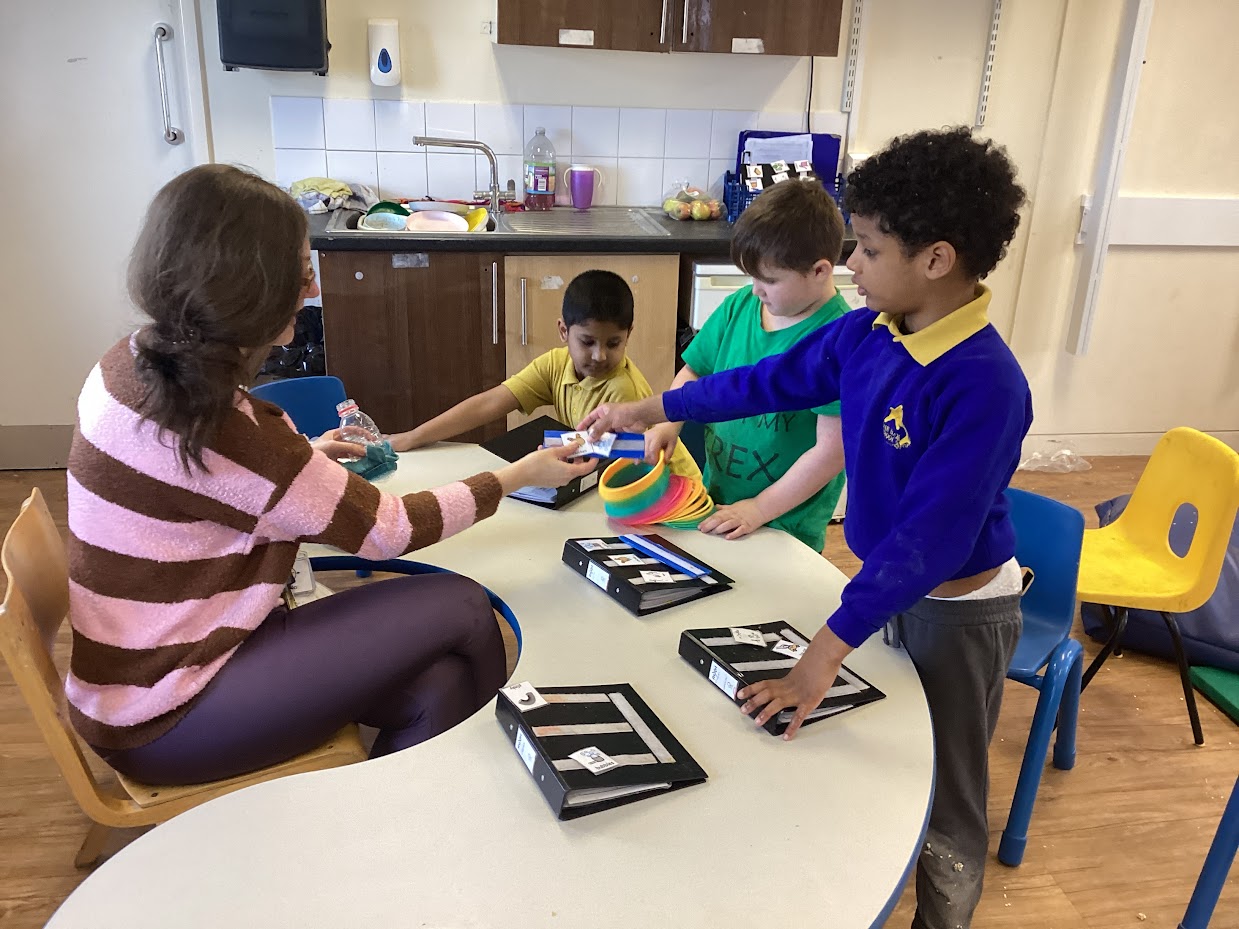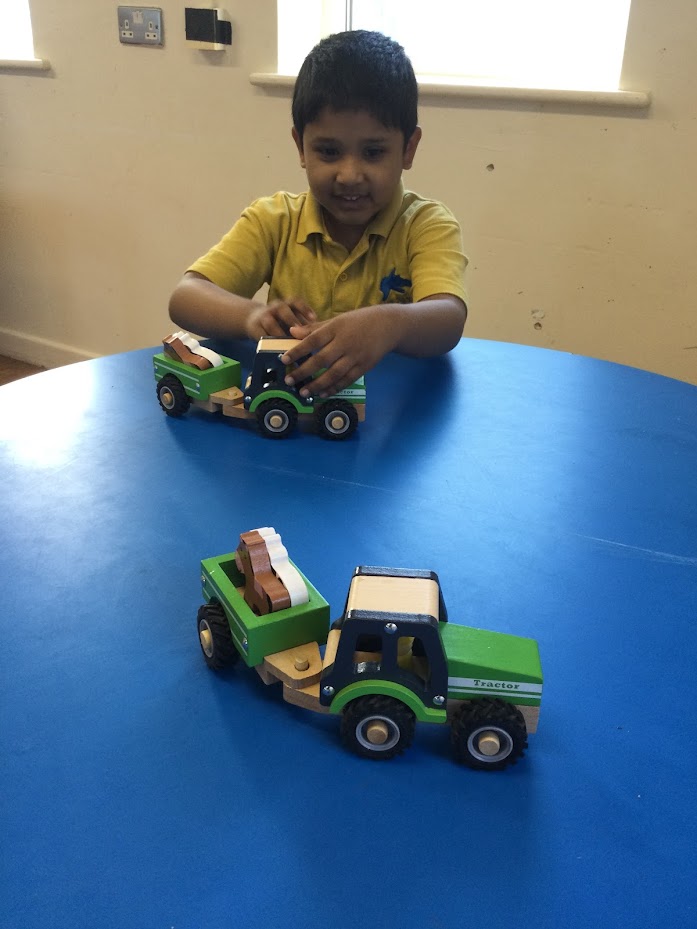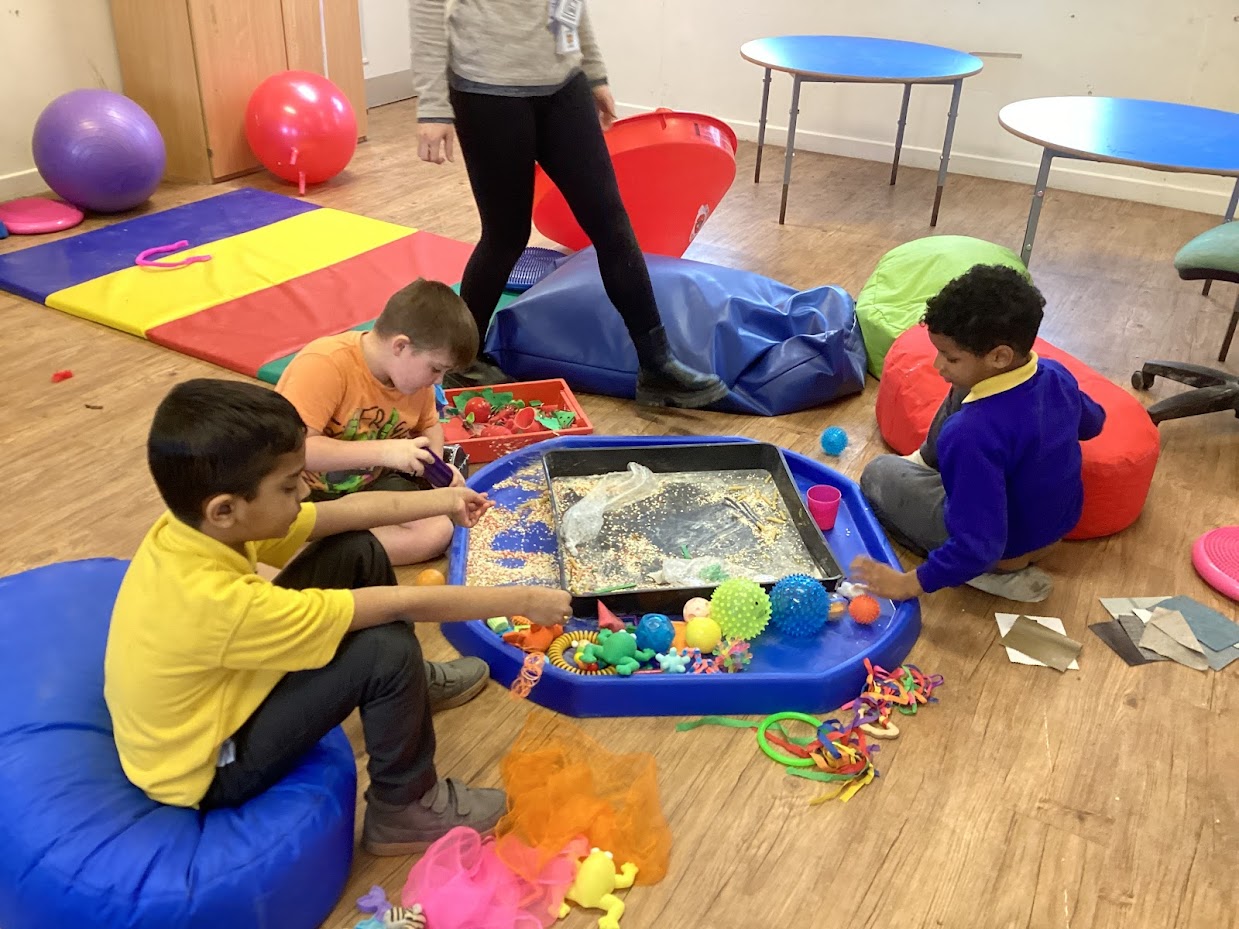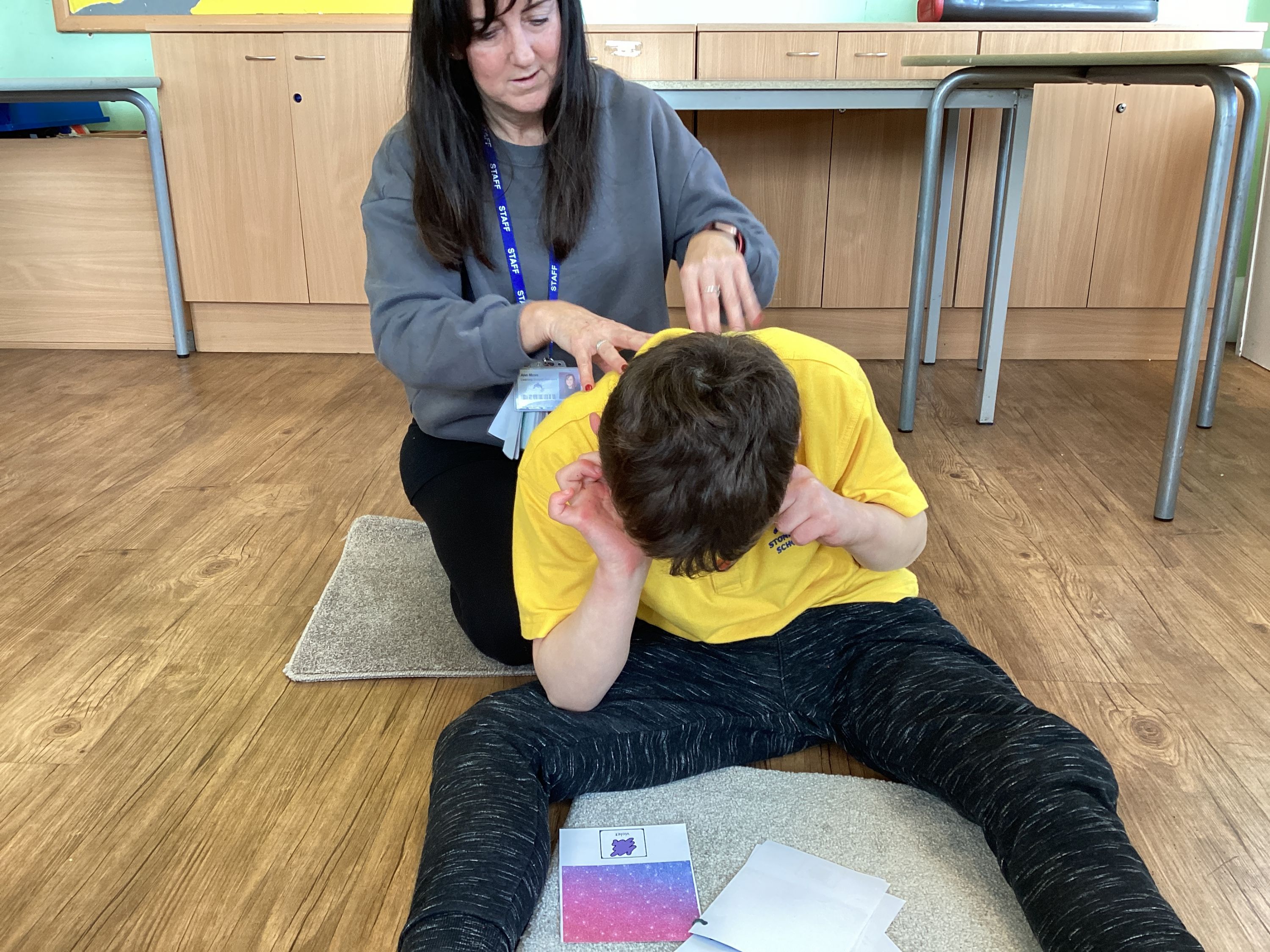Specialist Strategies
At Stone Bay School we use a great variety of specialist strategies and approaches that support our pupils in
-
Getting ready for learning
-
Communicating successfully
-
Accessing a personalised and individual curriculum

Makaton is a language programme that uses signs, together with speech and symbols, to enable pupils to communicate. It supports the development of essential communication skills such as attention, listening, comprehension, memory and expressive speech and language.
Intensive Interaction is an approach to help pupils at early levels of development. Intensive Interaction works on early interaction abilities - how to enjoy being with other people, to relate, interact, know, understand and practice communication routines. Intensive Interaction develops the ‘fundamentals of communication’, eye contacts, facial expressions, vocalisations leading to speech, taking turns in exchanges in conversation and the structure of conversation.
Attention Autism is an intervention model designed by Gina Davies, a Specialist Speech and Language Therapist. It aims to develop natural and spontaneous communication through the use of visually based and highly motivating activities. It improves engagement and supports pupils to develop their attention and focus.
TEACCH (The TEACCH Autism Program) is a structured teaching approach to teach children in a way that makes the most of their strengths and works around their areas of difficulty. The TEACCH approach aims to facilitate learning through a visual and structured teaching approach that makes use of visual supports to provide meaning, promote independence, and capitalise on the individual’s strengths.
TacPac is a sensory communication resource using touch and music to align the senses and develop communication skills. It helps those who have any kind of sensory impairment or communication difficulties.
Zones of Regulation supports pupils to develop their understanding of their own feelings, how to communicate these and
Identiplay is an approach that helps to establish a shared focus between child and adult. By doing this, it supports the development of imitation skills, which in turn builds children’s confidence as they practice a new skill. It also helps to develop communication and play skills.
Fun with Food aims to desensitise pupils to food smells and textures, to help prepare them for eating and to assist in developing a positive attitude to food.
Sensory Circuits are a part of a sensory motor skills programme that helps children and young people become more organised and achieve the ‘just right’ level of alertness they need to help them prepare for the day’s learning.
Dough Disco helps to build pre-writing skills. It is a physical development activity, a specific exercise for the fingers to improve our pupils' fine motor skills such as grip and release, isolating fingers, pinching, poking and squeezing.
These are only some of our most used strategies - we constantly strive to build up our toll box even more!
Sensory love for our sensory lovers!
At Stone Bay School we have a lot of love for all things sensory, whether it be giving sensory input through swinging high, bouncing on an exercise ball, or being immersed in water; offering inviting and appealing messy play options; or providing all the wonderful sensory exploration opportunities that outside spaces can offer. We are committed to ensuring that your child’s sensory needs are met throughout their school day and as such provide what we call a balanced ‘sensory diet’ for each child. This will look different for each child but will take into account their preferences, any aversions or sensitivities, and their needs with regards to keeping them as happy, regulated and focused as possible. Your child may need ear defenders to support their access to school life. They may need regular movement breaks. They may get a lot out of deep pressure activities and enjoy wearing a body sock or being wrapped in stretch fabric. They may need to fiddle with twiddly resources in order to support their concentration. They may need to access a regular sensory circuit (I will talk more about this below). They may find it difficult to sit on a chair for any amount of time and may therefore need to access their learning whilst on the floor, a beanbag or a yoga ball. We know that what works for one child may not work for another and are therefore committed to the continual problem solving of the child’s individual needs.
What strategies do we use to support your child’s sensory needs in school?
So how exactly do we do this? Below I have outlined a range of approaches that we use to offer a balanced sensory diet in school.
Sensory Circuit
A Sensory Circuit is a sequence of physical activities for your child to participate in. The circuit has three stages: alert, organise and calm which your child will move through in this order. The physical activities in the alert phase are designed to energise so could be something like running or jumping. The organising phase is focused on organising more than one sense at a time so it could be balancing, or it could be aiming bean bags at a target. The calming phase could include massage, relaxing music, or rolling over a yoga ball. The circuit aims to leave your child feeling regulated, focused and ready to learn.
At Stone Bay, we feel that most children could benefit from regular participation in sensory circuits. Some children may struggle to take part in a sensory circuit for many reasons. For some, it may just not be appealing to them and so we are always looking for ways to go through those same stages, achieving the same end goal but in a more individualised way that would better suit that child’s needs. Examples of this could be a ‘silly session’ or ‘laughter yoga’.
Silly Session
A silly session is something that has been created in school, and it is my most favourite thing! In a sensory circuit there is an element of expectation that your child, with some support and adult modelling, will pick up the bean bags and aim them at the target and not in fact collect them all and stash them in a corner, or organise them by colour, or intently get to work at trying to release all the beans! You may know and love a child that would be more interested in the latter options - I certainly do (many!)! The silly session takes away this expectation, takes away the resources, and offers energising fun through positive (and silly!) interactions with grown ups and peers. These activities include tickles (favoured by most children!), silly faces (with lots of lovely mirroring and intensive interaction style responses), and laughter yoga (where we attempt some simple yoga poses, such as
These sessions end in such beautiful calm and so they really are achieving this goal. But more than this, they involve such lovely, positive interactions and are supportive in building relationships and building trust.
Twiddle Time
Many of our pupils enjoy twiddling, whether it be with spinners, twiddle toys, or sensory items such as flour. We offer opportunities for this throughout the school day. I like to have specific, short sessions for this on my timetable and I sing simple songs to add to the repetition of this ritual. The songs give another context clue for the children and let them know ‘when I hear this song, I know I get to choose a twiddle toy’.
Sensory Stories
Sensory stories are a wonderful thing - making narratives accessible and more engaging for our learners. Not only do they provide a stimulating learning experience but they have many other benefits. A sensory story could be used to rehearse an upcoming trip or visit, to practise spoken language, to explore sensory issues around food, to rehearse responses to certain stimuli and to become more accustomed to certain stimuli. The possibilities are endless and the benefits are many. That is why at Stone Bay our curriculum puts sensory storytelling at the heart of each topic with all activities flowing out from this story. Each new topic will explore a new sensory story and it is in the repetition of this story that anticipation, initiation and other wonderful learning can take place.
Other useful spaces and resources
Our pupils will need regular movement breaks and again what this consists of will be different for each child. It may be using resources such as swings, or exercise balls. It could be running around in the garden, or even visiting the soft therapeutic play space. We have a range of spaces and resources in school that will support the provision of a balanced sensory diet. We have a well-resourced and stimulating forest school garden space as well as two other garden spaces with a range of play equipment. We have a jacuzzi where many children love to engage with all the wonderful sensory exploration that water offers, including fully submerging themselves in water. We also have sensory rooms that can provide calm when needed and also offer opportunities for sensory awe and wonder in coloured bubbles floating up tubes and other bright and beautiful displays.
How can you support your child’s sensory needs at home?
I hope that some of the above ideas will be available to you to explore at home. Offering movement breaks, putting music on to jump about to, or music on to calm and relax. Offering calming massage, or energising tickles. These are activities that you could access without the need of very much space or many resources.
You could also explore ‘twiddle time’ at home with your child. In the link below is a video I created when I was at home with covid. I managed to improvise a makeshift session from things I had around the house. I hope this may be helpful in giving you ideas of how to explore this at home.
Resources
The things that can be really meaningful for your child to interact with need not be expensive or difficult to source. Sensory items such as rice, water, shaving foam, pasta, placed in a tray for your child to explore can be engaging, regulating and often support developing concentration skills. Use empty crisp tubes with rice inside to create shakers, or put water, oil and food colouring in a bottle to create a lava lamp type effect. Shredded paper, wool scraps, flour, all can create powerful sensory experiences. I recently discovered that the children in my class love the sensory experience of holding coloured transparencies to their face in order to change the colour of everything they see. We found we could recreate this experience using old sweet wrappers (which I managed to collect up at Christmas).

